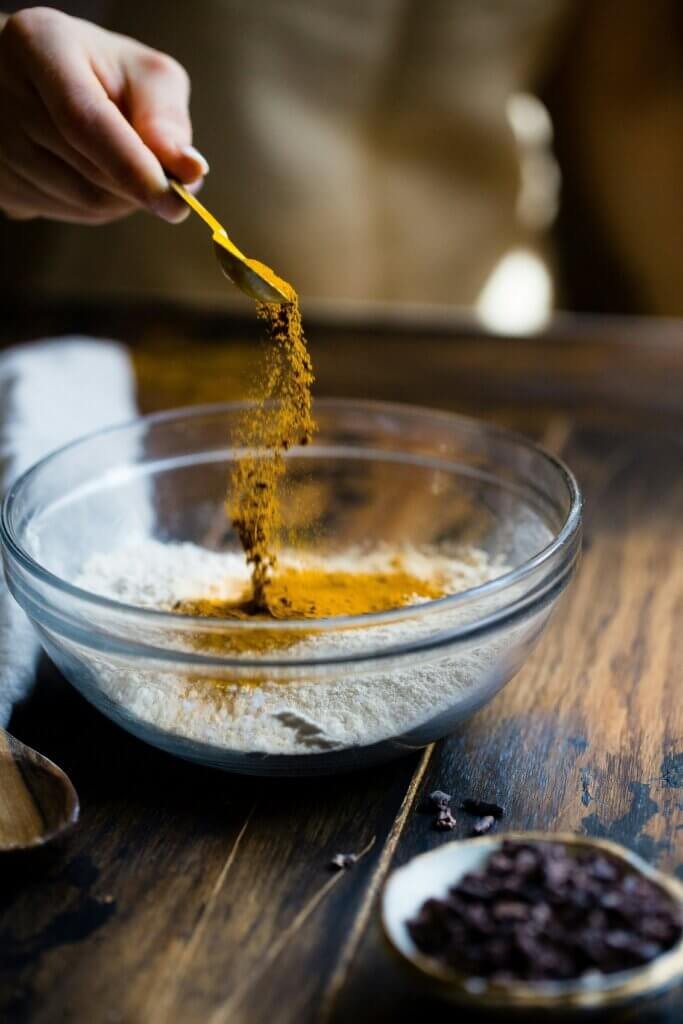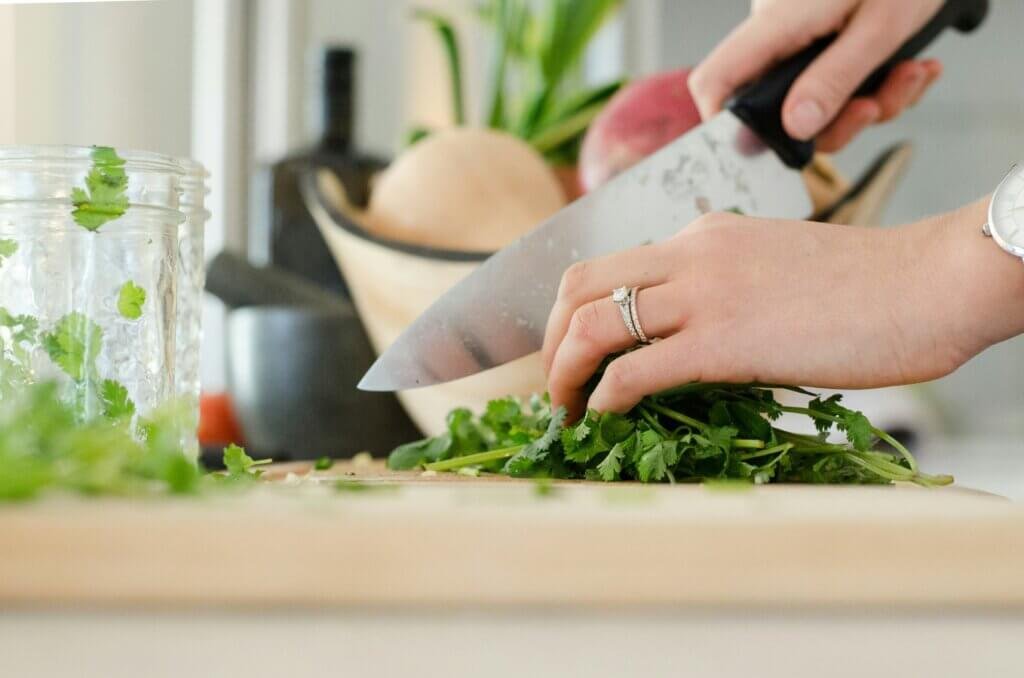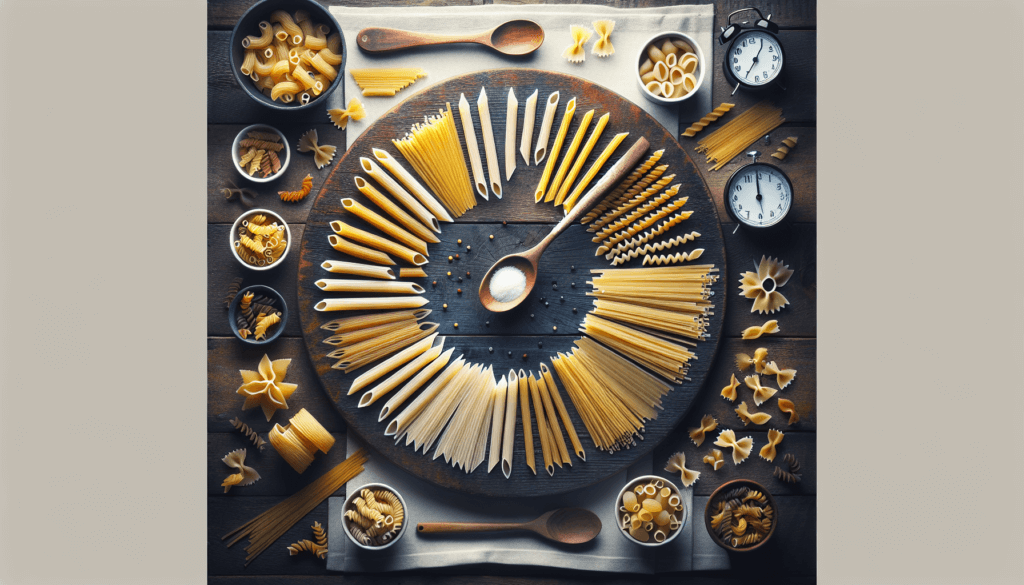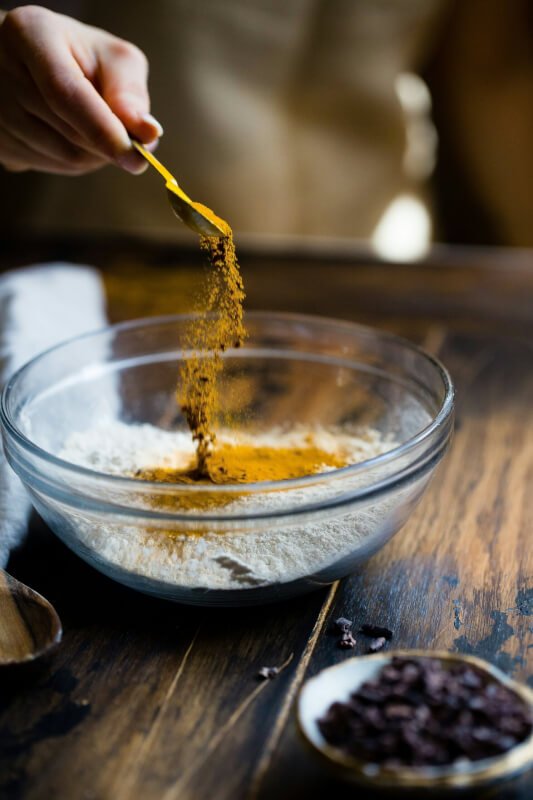If you love pasta but struggle to achieve that perfect al dente texture, fret not! We’ve got you covered with the most popular cooking tips that will have you cooking pasta al dente like a pro. From selecting the right type of pasta to mastering the cooking time, these tips will ensure that every bite of your pasta is cooked just right. So, put on your apron, grab a pot, and let’s dive into the world of perfectly cooked pasta.
Choosing the Right Pasta
When it comes to cooking pasta, the first step in achieving perfection is choosing the right type of pasta. The pasta you select should complement the sauce or dish you plan to prepare. Different pasta shapes hold and absorb sauce differently, so it’s important to consider this when making your decision.
Consider the sauce or dish
Before choosing your pasta, consider the sauce or dish you will be serving it with. For thick and hearty sauces, such as tomato-based or meat sauces, choose pasta shapes with nooks and crannies to catch and hold the sauce, like penne or rigatoni. For lighter sauces, such as olive oil-based or creamy sauces, go for delicate pasta shapes, like angel hair or farfalle.
Choose the appropriate pasta shape
The shape of the pasta also plays a role in how the dish will turn out. Long, thin pasta like spaghetti or linguine are perfect for dishes with simple and light sauces, allowing the flavors to shine through. Short and chunky pasta shapes, such as fusilli or rotini, are great for dishes with lots of texture, as the sauce clings to the twists and turns of the pasta.
Read the package instructions
Once you have chosen the perfect pasta shape, it’s important to read and follow the package instructions. Different pasta shapes and brands may have slightly different cooking times and instructions, so take a moment to familiarize yourself with them. This will ensure that your pasta turns out just right, cooked to perfection.
Boiling the Pasta
The next step in cooking pasta al dente is properly boiling the pasta. This involves using the right equipment and following some essential steps.
Use a large pot
To prevent overcrowding and uneven cooking of the pasta, it’s crucial to use a large pot. Pasta needs space to move around and cook evenly. A pot that is too small may result in clumpy and overcooked pasta. Choose a pot that is big enough to comfortably hold the amount of pasta you will be cooking.
Add enough salt
Salt is crucial for flavoring the pasta while it cooks. Add enough salt to the boiling water before adding the pasta. As a general guideline, use about one tablespoon of salt for every four quarts of water. This will ensure that the pasta absorbs the right amount of seasoning and enhances its flavor.
Bring water to a rolling boil
Before adding your pasta to the pot, make sure the water is at a rolling boil. This means the water should be rapidly bubbling and swirling. Adding pasta to water that is not hot enough will result in the pasta sticking together and becoming gummy. Waiting for the water to reach a rolling boil ensures that the pasta cooks evenly.
Cook according to package instructions
Once the water is boiling, add the pasta to the pot and stir gently to prevent sticking. Cook the pasta according to the package instructions, which usually indicate a range of cooking times. Start testing for doneness at the lower end of the cooking time range to ensure you achieve the desired al dente texture.
Test for doneness
To determine if the pasta is cooked to al dente, take a piece and bite into it. Al dente pasta should be tender to the tooth, with a slight resistance in the center. It should not be crunchy or mushy. If the pasta is not yet cooked to your liking, continue cooking for a minute or two and test again. Remember that pasta will continue to cook slightly once it is removed from the boiling water.

Timing and Al Dente Texture
Achieving the perfect al dente texture requires proper timing and some additional steps to enhance the flavor and texture of the pasta.
Cook pasta until al dente
To achieve the ideal al dente texture, it’s crucial to cook the pasta until it is just tender with a slight bite in the center. Overcooking the pasta will result in a mushy and unappetizing texture. It’s better to slightly undercook the pasta as it will continue to cook when added to the sauce.
Reserve some pasta water
Before draining the cooked pasta, it’s a good idea to reserve a small amount of the pasta water. The starchy pasta water can be used to loosen and bind the sauce to the pasta, creating a creamy and cohesive dish. This is especially helpful if the sauce is too thick or needs some extra moisture.
Finish cooking in the sauce
To infuse the pasta with the flavors of the sauce, it’s recommended to finish cooking the pasta in the sauce. This allows the pasta to absorb the flavors and ensures that every bite is rich and flavorful. Adding the cooked pasta directly to the saucepan also helps with creating a well-coated dish.
Allow pasta to rest
After cooking the pasta and finishing it in the sauce, it’s important to allow the dish to rest for a few minutes before serving. This resting period allows the flavors to meld together and the pasta to fully absorb the sauce. It also helps the pasta to firm up slightly, resulting in a better texture.
Avoiding Common Mistakes
When cooking pasta, there are some common mistakes that can easily be avoided. By being aware of these potential pitfalls, you can ensure that your pasta turns out perfectly every time.
Overcooking the pasta
One of the most common mistakes when cooking pasta is overcooking it. Overcooked pasta becomes mushy and loses its texture. To avoid this, carefully follow the package instructions and start checking for doneness a minute or two before the minimum cooking time indicated. Remember, pasta should always be cooked to al dente.
Rinsing the cooked pasta
While it’s common to rinse other cooked foods, such as rice or quinoa, rinsing pasta is generally not recommended. Rinsing the pasta removes the starches that help the sauce cling to the pasta, resulting in a less flavorful dish. Save yourself the extra step and skip rinsing the cooked pasta.
Skipping the salt
Salt is an essential component of cooking pasta as it helps to enhance its flavor. Skipping the salt in the boiling water can result in bland-tasting pasta. Make sure to add enough salt to the boiling water before adding the pasta to ensure that the pasta is properly seasoned.
Using too little water
Using an insufficient amount of water when boiling pasta can lead to clumping and uneven cooking. Pasta needs enough water to move around and cook evenly. As a general rule, use at least four quarts of water per pound of pasta. This will give the pasta enough space to cook properly.
Not stirring the pasta
Stirring the pasta during the initial stages of cooking is important to prevent it from sticking together. When pasta is first added to the boiling water, it can easily clump together. By stirring it gently, you ensure that each strand or shape of pasta cooks independently and does not form a sticky mass.

Enhancing the Flavor
Besides cooking pasta to perfection, there are some additional techniques you can employ to enhance the flavor of your pasta dishes. These simple tricks can take your pasta from good to outstanding.
Cook pasta in broth
Instead of boiling pasta in plain water, try using broth for added flavor. Cooking pasta in vegetable, chicken, or beef broth infuses the pasta with a subtle savory taste that complements a variety of sauces. Use a 1:1 ratio of broth to water when boiling the pasta, and enjoy the enhanced flavor it brings to your dish.
Toast the pasta before cooking
Toasting the pasta before boiling it can add a nutty and slightly caramelized flavor to your dish. Simply heat a dry pan over medium heat and add the pasta, stirring constantly until it turns a golden brown color. Toasting the pasta adds a depth of flavor that pairs well with robust sauces and can elevate a simple pasta dish.
Add herbs and spices to the cooking water
Another way to infuse your pasta with flavor is to add herbs and spices to the cooking water. This simple step can transform a basic pasta dish into a fragrant and flavorful masterpiece. Add herbs such as basil, oregano, or rosemary, and spices like garlic powder or chili flakes to the boiling water to impart a subtle taste to the pasta.
Toss pasta with infused oil
After cooking the pasta, consider tossing it with infused oil to add an extra layer of flavor. Infused oils, such as garlic or chili oil, can take your pasta dish to a whole new level. Drizzle a small amount of the infused oil over the cooked pasta and toss gently to ensure each strand is coated. The oil will enhance the taste and complement the sauce you choose to serve with your pasta.
Serving and Storing Al Dente Pasta
Once your pasta is perfectly cooked al dente, it’s important to serve and store it correctly to maintain its texture and flavor.
Serve immediately
Pasta is best enjoyed when it is served immediately after cooking. As soon as the pasta is done, drain it well and transfer it to individual serving plates or a large serving dish. The longer the pasta sits, the more it will continue to cook and lose its al dente texture.
Reserve some sauce for serving
To prevent your pasta from becoming dry, it’s a good idea to reserve some sauce to add just before serving. This ensures that the pasta remains moist and is well-coated with sauce. Simply set aside a small amount of sauce and reheat it gently before pouring it over the pasta.
Reheat pasta properly
If you have leftovers or need to reheat pasta, it’s important to do so properly to avoid ending up with an overcooked and mushy mess. The best way to reheat pasta is to do it in a skillet with a little bit of oil or sauce. This method helps revive the flavors and texture of the pasta while preventing it from becoming too soft.
Store leftovers in an airtight container
If you have any leftovers, store them in an airtight container in the refrigerator. Pasta can dry out quickly, so it’s important to keep it well-sealed to maintain its texture. When reheating the leftovers, add a little sauce or oil to prevent the pasta from sticking together and to help restore its moisture.

Experimenting with Pasta Variations
While traditional pasta shapes are wonderful, don’t be afraid to step outside your comfort zone and experiment with different pasta variations. Trying new shapes and types of pasta can add excitement and variety to your meals.
Try different pasta shapes
There is a wide array of pasta shapes available, each with its own unique characteristics. From corkscrews to shells to spirals, the possibilities are endless. Have fun exploring different pasta shapes and discover how their textures and designs can enhance your dishes.
Use alternative flours
In addition to traditional wheat-based pasta, there are also pasta options made from alternative flours, such as chickpea, quinoa, or brown rice flour. These gluten-free alternatives offer a different taste and texture profile, allowing those with dietary restrictions or preferences to still enjoy delicious pasta dishes.
Make homemade pasta
If you are feeling adventurous and want to take your pasta game to the next level, consider making homemade pasta. Making pasta from scratch allows you to control the ingredients and texture, resulting in a truly personalized dish. With a little practice and patience, you can create your own beautiful and delicious pasta at home.
Try different sauces
Just as there are endless varieties of pasta, there are also countless sauces to explore. Branch out from your usual tomato or Alfredo sauces and experiment with different flavor combinations. Whether it’s a rich pesto sauce, a tangy lemon butter sauce, or a spicy arrabbiata sauce, there are plenty of options to elevate your pasta dishes.
Troubleshooting Tips
Even with careful attention to detail, sometimes things can go wrong when cooking pasta. Here are some troubleshooting tips to address common issues.
Pasta sticking together
If your pasta ends up sticking together after cooking, it may be due to insufficient stirring during the initial stages of boiling. To prevent this from happening, make sure to stir the pasta gently but consistently in the first few minutes of cooking. This will help prevent clumping and ensure even cooking.
Pasta is too chewy
If your pasta turns out too chewy or undercooked, it may be because it was not cooked for long enough. To correct this, return the pasta to the boiling water for an additional minute or two, then test for doneness again. Keep in mind that pasta should still have a slight resistance in the center when cooked al dente.
Sauce not sticking to the pasta
If your sauce is not sticking to the pasta as well as you’d like, it may be because the pasta was not properly drained. Make sure to drain the pasta well, shaking off any excess water before adding it to the sauce. Additionally, reserving some pasta water and adding it to the sauce can help create a better sauce-to-pasta bond.
Pasta is too salty
If your pasta turns out too salty, it may be due to adding too much salt to the boiling water. To minimize the saltiness of the cooked pasta, try rinsing it under cold water briefly. This can help remove some of the excess salt. However, be careful not to rinse the pasta for too long, as it may also wash away some of the desired flavors.

Tips for Gluten-Free Pasta
For those who follow a gluten-free diet or have gluten sensitivities, there are some specific considerations to keep in mind when cooking gluten-free pasta.
Choose gluten-free pasta brands
When selecting gluten-free pasta, be sure to choose reputable brands that specialize in gluten-free products. These brands have developed their pasta to mimic the taste and texture of regular pasta, ensuring a satisfying dining experience.
Cook gluten-free pasta al dente
Just like regular pasta, gluten-free pasta should be cooked al dente for the best texture. Gluten-free pasta has a tendency to become mushy quickly if overcooked. Follow the package instructions for cooking times and start testing for doneness at the lower end to achieve the desired texture.
Be cautious with cooking time
Gluten-free pasta may require a slightly shorter cooking time compared to regular pasta. This is because gluten-free flours tend to absorb liquid faster and break down easier when cooked. Keep a close eye on the pasta while it’s cooking to avoid overcooking and ending up with a mushy texture.
In conclusion, cooking pasta al dente is an art that requires attention to detail and some culinary know-how. By following these tips and techniques, you can ensure that your pasta is perfectly cooked with a delectable al dente texture. Remember to choose the right pasta shape, boil it properly, and enhance the flavor with simple tricks. Don’t be afraid to experiment with different pasta variations and troubleshoot any issues that may arise. Whether you’re a pasta novice or a seasoned cook, mastering the art of cooking pasta al dente will elevate your culinary skills and make every pasta dish a delicious success.


